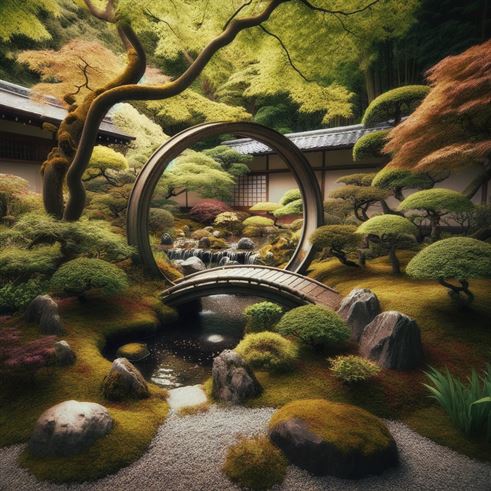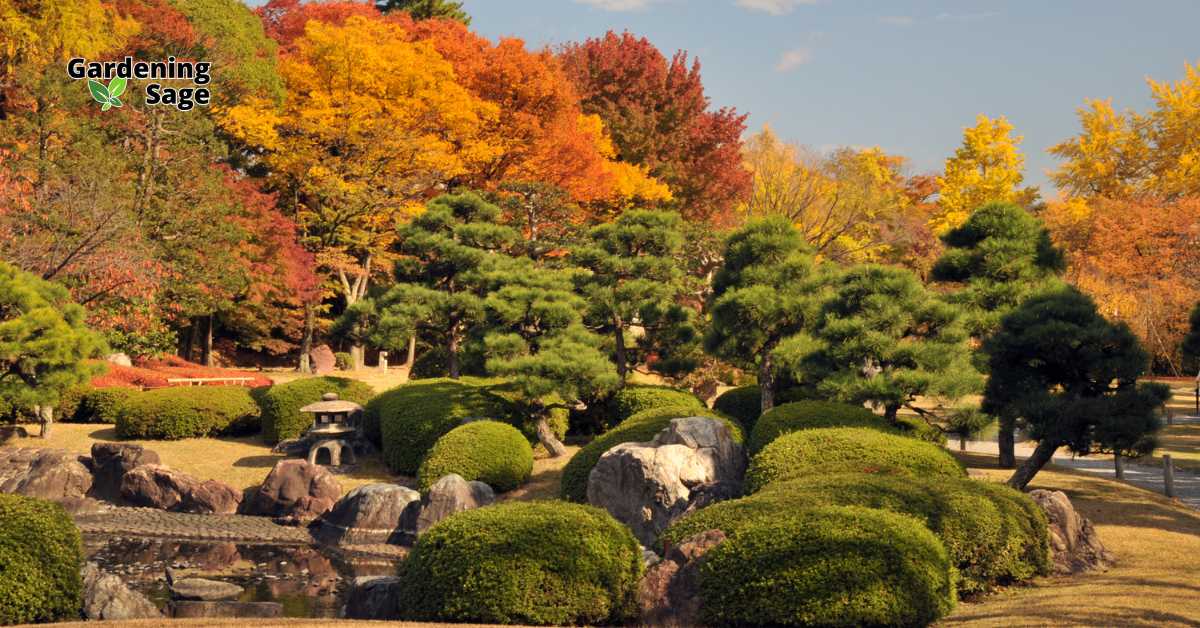Japanese garden design is an ancient art form that harmonizes nature, beauty, and tranquility. Far more than just an aesthetic choice, Japanese gardens are a reflection of philosophy and history, designed to evoke peace and contemplation.
In this guide, we delve into the key principles of Japanese garden design and show you how to bring this serene beauty to your own outdoor space.
Understanding the Essence of Japanese Gardens
The Japanese garden, known as “nihon teien“, is steeped in tradition and symbolism.
Rooted in Shinto, Buddhist, and Taoist philosophies, these gardens are designed to replicate natural landscapes in a more idealized form. They’re spaces where every rock, water feature, and plant has a purpose, collectively creating a miniature representation of the natural world.
These gardens are not just for viewing nature but for immersing oneself in it, fostering a deep connection with the natural world.
Core Principles of Japanese Garden Design
To create a Japanese garden, certain design principles must be followed:

- Asymmetry (Fukinsei): This principle reflects the irregularities and asymmetry found in nature. Rather than striving for perfection, it embraces imbalance, creating a more natural appearance.
- Simplicity (Kanso): It emphasizes clean lines and open spaces, avoiding clutter. This simplicity fosters a sense of tranquility.
- Enclosure (Miegakure): A Japanese garden often uses elements like fences, hedges, or screens to create a sense of enclosure, making the garden a world apart.
- Borrowed Scenery (Shakkei): This principle involves incorporating the background landscape into the garden’s composition.
Incorporating Water and Rocks
Water and rocks are pivotal in Japanese gardens, symbolizing various natural elements:
- Water Features: Water, whether it’s a pond, stream, or waterfall, symbolizes purity and fluidity. It’s often the heart of the garden, reflecting the changing seasons and sky.
- Rocks and Stones: Rocks can represent mountains, islands, or even animals. The selection and placement of rocks are done with great care, often serving as focal points.
- Koi Ponds: Introducing koi fish to ponds adds movement and life, symbolizing good fortune and perseverance.
Plant Selection in Japanese Gardens
Choosing the right plants is crucial in a Japanese garden:
- Native Plants: Utilize plants native to your area but in a way that mimics Japanese aesthetics. Maples, pines, and azaleas are commonly used for their year-round appeal.
- Seasonal Awareness: Incorporate plants that change with the seasons to bring a sense of temporality and natural rhythm to your garden.
- Moss and Grasses: These can create a soft, understated ground cover that complements more dramatic elements.
Pathways and Bridges
Pathways and bridges guide exploration and movement through the garden:
- Pathways: Gravel or stone paths meander through the garden, creating a journey of discovery. They often lead to hidden areas or features.
- Bridges: Bridges, whether simple wooden designs or ornate stone structures, cross water features and symbolize the journey from one world to another.
Creating Harmony and Balance
Achieving harmony and balance is the ultimate goal of a Japanese garden:
- Integrating Elements: Ensure that water, rocks, plants, and architectural elements like lanterns or pagodas work together harmoniously.
- Meditative Spaces: Include spaces for sitting and contemplation, such as a stone bench or a small pavilion.
- Respect for Nature: The design should show a deep respect for nature, celebrating its beauty in a subdued, understated manner.
The Artful Creation of Japanese Gardens
Creating a Japanese garden is a journey into the art of landscape design, where every element is thoughtfully and harmoniously integrated.
This guide serves as your starting point to craft a serene and beautiful garden that echoes the time-honored principles of Japanese aesthetics.














